ESA’s JUICE Mission – Making History on its Way to Jupiter
Athena Coustenis (CNRS/Observatoire de Paris, Meudon, France), member of the JUICE Science Working Team and Co-I of the JANUS camera, describes the emotional journey to the launchpad and beyond for Europe’s new mission to explore the icy moons of Jupiter.
Read article in the fully formatted PDF of the Europlanet Magazine.
T
he JUpiter ICy moons Explorer (JUICE) launched on Friday, 14 April 2023 at 14:14 CEST (9:14 AM local) from the European Space Agency (ESA) spaceport in Kourou, French Guiana.
I was very happy to witness the launch on site, from the Toucan Observation Deck, alongside many of the friends and colleagues with whom I started this adventure more than 13 years ago. We all watched in awe as one of the very last Ariane 5 launchers lifted the spacecraft, which had a launch-mass of 5.963 tonnes, from pad ELA-3. The 116th Ariane 5 mission flew due east out over the Atlantic Ocean and inclined just shy of three degrees to the Equator. At three minutes and nine seconds (T+3:09) into the flight, the fairings separated to reveal JUICE in its stowed-configuration. The upper stage separated from the core stage at T+8:44 and five seconds later, after a very short coast phase, the upper stage’s HM-7B engine ignited. This burn pushed JUICE to a speed of 2.5 kilometres per second, giving the spacecraft enough energy to escape the Earth-Moon system. The upper stage shut down at T+25:25, with spacecraft separation occurring shortly after at T+27:45.
To our relief, after some very long, nervous minutes watching the screen, first contact with JUICE was achieved. About an hour later, the communications antenna, followed by the 85-square-metre solar arrays – the largest solar panels ever flown on an interplanetary spacecraft – deployed perfectly. JUICE was safely on its way! Over the following hours, days and weeks, JUICE deployed various antennae, a magnetometer and probes for measuring its gravitational, radio, plasma and magnetic environments. A sticky situation with the 16-metre-long Radar for Icy Moon Exploration (RIME) antenna, which jammed mid-way through unfolding, was resolved eventually by firing two actuators that jolted the final pieces into position.
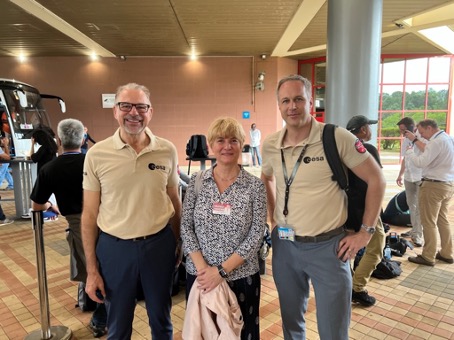
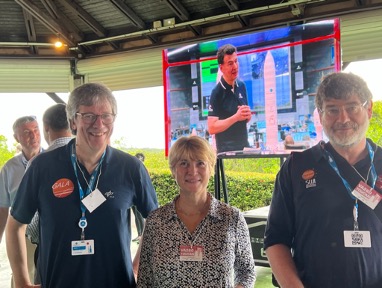
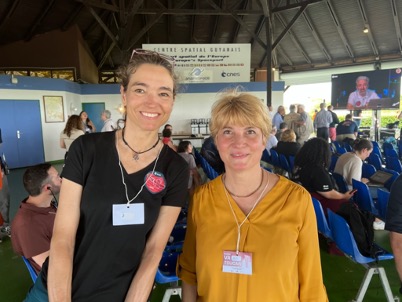
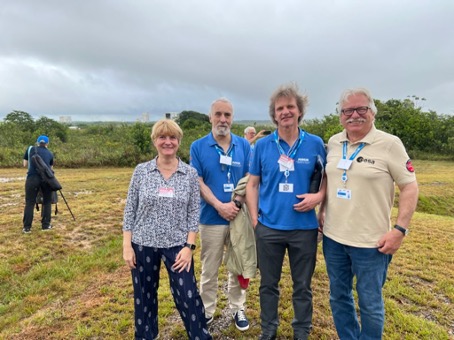
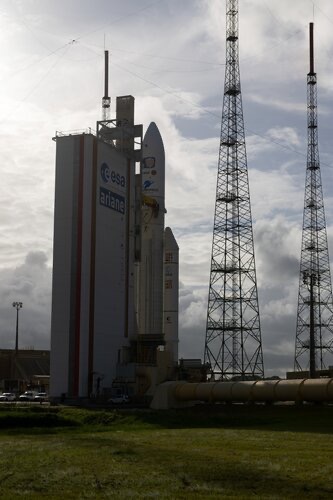

The successful launch was an emotional moment because the story of JUICE started with a setback: in 2011, the Europa Jupiter System Mission (EJSM), a proposed joint NASA-ESA mission to study Jupiter’s and magnetosphere, was abandoned due to constraints with the NASA budget. However, along with many other colleagues, Michele Dougherty, Emma Bunce, Olivier Grasset, Christian Erd and I recovered the proposed Ganymede orbiter from EJSM and turned it into the first large mission to fly within the European Space Agency’s Cosmic Vision 2015-2025 plan.
The high-level goal of JUICE is to investigate the largest planet in our Solar System, Jupiter – its magnetosphere, its icy moons and their inter-relations in all their complexity – through detailed observations with a suite of ten unique instruments. However, the main focus of the mission will be on the three large ‘Galilean’ moons, Ganymede, Callisto and Europa, that are expected to harbour liquid water oceans underneath their surfaces. JUICE will characterise these moons, highlighting their unique features as planetary objects, and investigate their astrobiological potential as possible habitats. The mission will also explore Jupiter’s complex environment in depth and study the wider Jovian system as an archetype for gas giants in other exoplanetary systems across the Universe. JUICE will arrive at Jupiter in mid-2031, with a mission duration foreseen until at least 2035. It is a 3-axis stabilised spacecraft that uses a set of spinning momentum wheels to adjust its orientation and a propulsion system to adjust its attitude and orbit. A series of Venus and Earth gravity assists will speed JUICE onwards during its 8.9-year cruise.
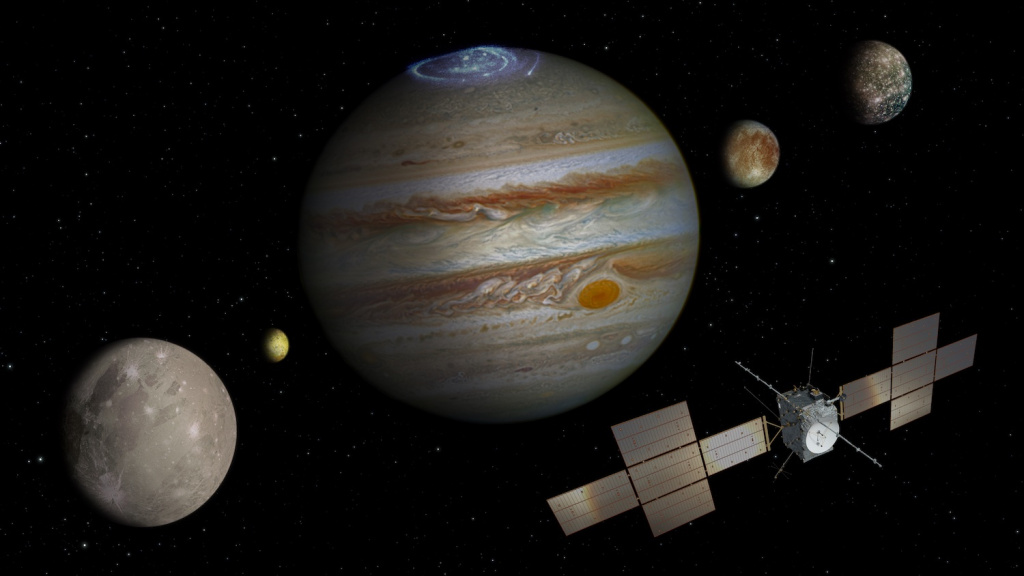
JUICE will be the first spacecraft ever to orbit a moon other than our own – Jupiter’s largest moon, Ganymede. And, en route to Jupiter, it will perform the first ever lunar- Earth gravity assist – a flyby of the Moon followed a day and a half later by the Earth – which will save a significant amount of propellant.
The mission will culminate in a dedicated nine-month orbital tour around Ganymede, during which the spacecraft will perform an in-depth investigation of the moon and its environment. During this phase, JUICE’s orbits will include an elliptical phase, followed by a circular orbit at a 5000 kilometre altitude above Ganymede’s surface, then a second elliptical phase. A final manoeuvre will put the spacecraft into a circular orbit at a 500 kilometre altitude. A mission extension, through continued operations at the final or at a lower orbit (target 200 kilometres), may be feasible depending on the propellant usage and the performance of the solar arrays and the overall spacecraft.
Once its mission ends, JUICE will eventually impact the surface of Ganymede to ensure that it does not collide with Europa and potentially contaminate it with microbes from the Earth carried by the spacecraft.
The science objectives for JUICE cover a broad range of different disciplines and call for a large number of measurements. JUICE will carry out extensive new studies of Jupiter’s atmosphere and magnetosphere – and their interaction with Jupiter’s moons – to enhance our understanding of the evolution and dynamics of the Jovian system. The mission will characterise the diversity of processes in the Jupiter system that may be required to provide a stable environment at the icy moons over geological time scales. This includes gravitational inter-relationships between the Galilean satellites, and their long-term tidal influence on the system as a whole. Ganymede, Europa and Io exhibit a 1:2:4 ‘Laplace resonance’ (below), whereby Io, the closest planet to Jupiter, orbits four times for every two orbits of Europa and one orbit of Ganymede. JUICE’s studies of Ganymede, Callisto and Europa will be enhanced by additional remote-sensing data gathered on Io and the smaller moons.
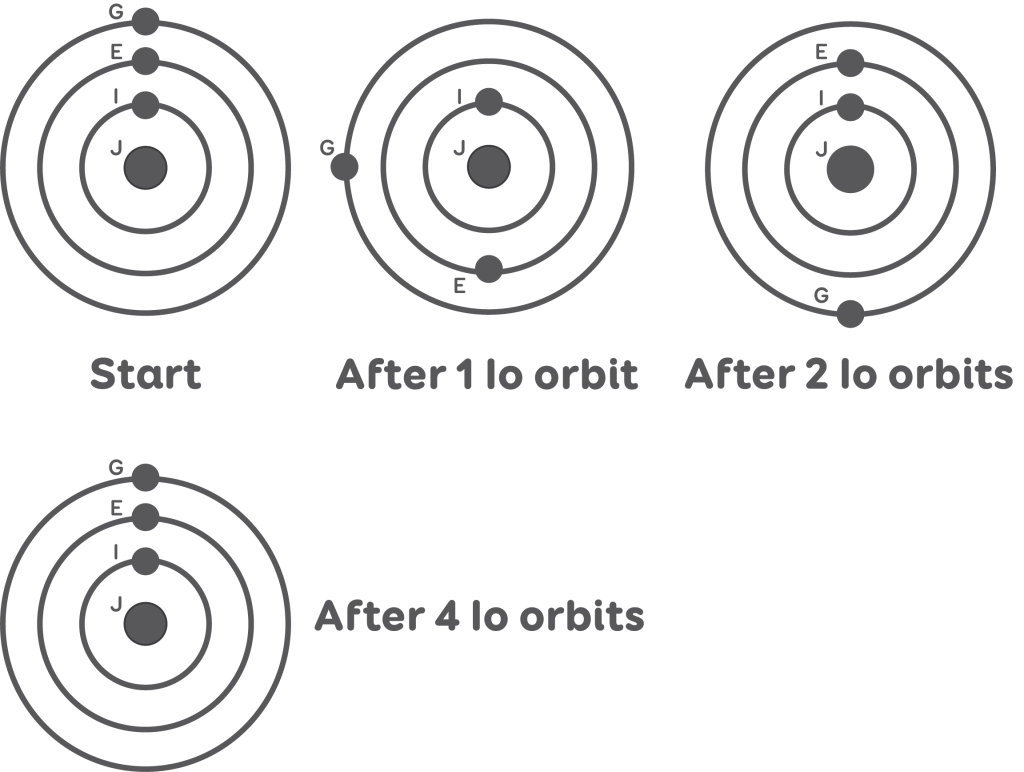
The tidal response of the moons’ icy shells strongly depends on the presence of oceans. The Galilean moons are locked in a stable 1:1 spin-orbit resonance (i.e. like Earth’s moon, they rotate once for every orbit). However, slight periodic variations in the rotation rate (physical librations) and the amplitudes associated with these librations may provide further evidence for subsurface oceans. JUICE will precisely measure the rotation rate, pole-position, obliquity (tilt) and libration amplitude of Ganymede. This will further constrain the dynamical history of the moon (e.g. despinning, resonance capture, non-synchronous rotation of the icy shell), as well as yielding information on the subsurface ocean and deeper interior.
Ganymede, the largest natural satellite in the Solar System, became the main target of this space mission not only because it provides a natural laboratory for the investigation of a possible habitable world, but also because of its unique magnetic and plasma interactions with the surrounding environment, and because of the role it plays with the other Galilean satellites within the Laplace resonance.
Ganymede and Europa are believed to be internally active, due to a strong tidal interaction and other energy sources. The instruments on board JUICE will investigate the evolution and chemical composition of the icy moons’ surfaces and of their subsurface oceans. The studies of subsurface liquid water oceans in several of these bodies will lead to a better understanding of their chemical composition and the possible sources and cycling of chemical and thermal energy. JUICE will also provide the research community with detailed information on how gas giants and their moons form and evolve, and will enable an evaluation of the processes that have affected the moons and their environments through time.
The JUICE spacecraft carries remote sensing, geophysical and in-situ instruments that are engineered to the specific challenge of taking measurements in Jupiter’s intense radiation environment. The payload (see infographic below) consists of ten state-of-the-art instruments and one experiment that uses the spacecraft telecommunication system with ground-based instruments. This suite of instruments involves people from many different countries and areas of expertise, who represent large scientific and engineering communities and demonstrate the broad international collaboration around the project.
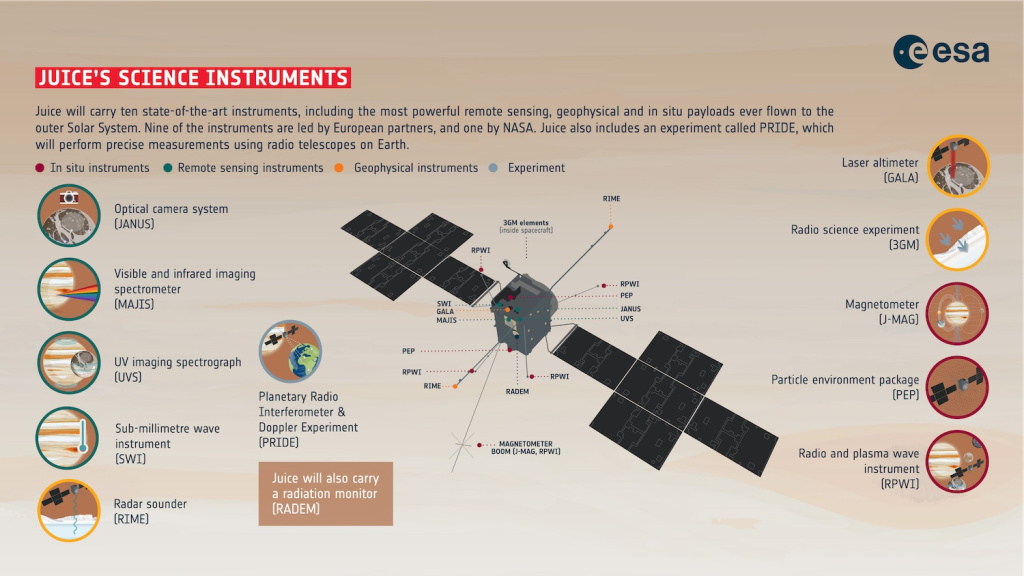
The remote sensing instruments include capabilities for imaging (JANUS) and spectral-imaging from the ultraviolet to the sub-millimetre wavelengths (MAJIS, UVS, SWI). The geophysical package consists of a laser altimeter (GALA), the radar sounder (RIME) for exploring the surface and subsurface of the moons. A radio science experiment (3GM) will probe the atmospheres of Jupiter and its moons, and perform measurements of the gravity fields. A further experiment (PRIDE) will use ground-based very-long-baseline interferometry to precisely determine the spacecraft’s position and velocity for complementary gravity science. Finally, particle and field investigations will be performed by the particle environment package (PEP), a magnetometer (J-MAG), and a radio and plasma wave instrument (RPWI), which includes electric field sensors and a Langmuir probe for measuring the the electron temperature, the electron density and the ion density of the plasma.
As with previous endeavours of this magnitude, JUICE is an international mission. NASA has contributed the UVS instrument and hardware for two European-led instruments, while the Japanese Space Agency (JAXA) has contributed hardware for various of the European-led instruments.
The fascinatingly complex system around Jupiter makes it a priority target for space missions and ground-based observations. NASA’s Juno mission, which arrived in 2016, is carrying out a focused study of Jupiter’s interior and inner magnetosphere that will be complemented by the in-situ characterisation of the wider Jovian system by JUICE, as well as NASA’s upcoming Europa Clipper mission.
JUICE and Europa Clipper will certainly provide original and ground-breaking results, including on Jupiter’s atmosphere, magnetospheric and plasma environment, as well as on the exospheres of the icy moons. Having two spacecraft at the same time around Jupiter will also improve the accuracy of data on positions over time (ephemerides) of the Galilean moons, thus enhancing our knowledge of the dynamics, resonances and internal dissipation in the Jovian system.
I would like to say a huge thanks to the whole JUICE team: Olivier Witasse, Giuseppe Sarri, Nicolas Altobelli, Claire Vallat and everyone working on this mission for the past 13 years! I’m looking forward to getting a glimpse of the arrival in mid 2031 and to the joint observations and many breakthroughs from the JUICE and Europa Clipper missions to come!


